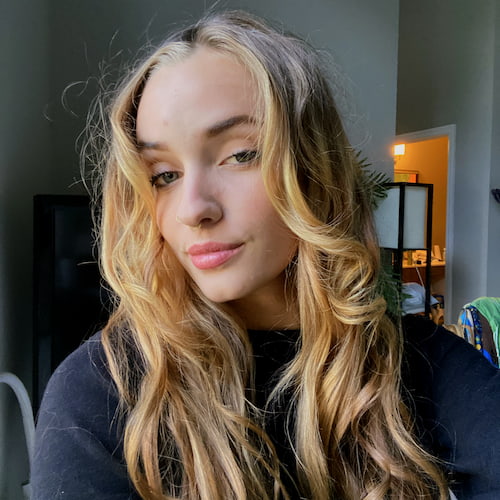
Diagnosing Dystonia
By: Amelia Zannoni
Dystonia: the Diagnosis
At first you may find yourself simply blinking more than usual, perhaps not being able to open your eyelids at times, causing “functional blindness.” Maybe you just notice that your muscles involuntarily contract repetitively. For some they are born with debilitating spams. Joe Beery, the father of twins diagnosed with Sagawa Syndrome or Dopa Responsive Dystonia describes it as “a never-ending roller coaster, with no answers” in the YouTube video, “A Family Changed Forever By Sequencing Technology.” Like so many other Dystonia patients, his twins were initially misdiagnosed with Cerebral Palsy. It took nearly five years before they recognized the symptoms as Dopa Responsive Dystonia and were treated with L-Dopa. Their symptoms disappeared immediately. Only a small percentage of Dystonia patients have Dopa Responsive Dystonia, and it is the only type of Dystonia that responds to L-Dopa or Levodopa. One of the main symptoms distinguishing Dopa Responsive Dystonia from Cerebral Palsy is that Dopa Responsive Dystonia patients have a higher level of functionality in the morning which decreases as the day progresses. Symptoms include muscle spasms, toe walking, turning the foot outward at the ankle, and/ or tremors. It is 2 – 4 times more likely to affect girls than boys. Dystonia can be an inherited condition which causes the brain to send incorrect signals to various body parts. Patients treated with L-Dopa often fully recover and lead symptom free lives.
While L-Dopa has been effectively treating Dopa Responsive Dystonia patients for over 50 years, Dystonia is still widely misunderstood and misdiagnosed. However, a new diagnostic tool developed by researchers at Harvard Medical School and Massachusetts Eye and Ear is changing the way Dystonia is diagnosed with their highly effective “Deep Learning Platform.” By analyzing MRI data, DystoniaNet (an AI platform) can instantly and objectively diagnose Dystonia in patients claiming to have a 98.9% accuracy. It does this by detecting abnormalities in certain regions of the brain, using 3D brain imaging, and zooming into microstructural details which otherwise would go unnoticed. It is currently under review for use in U.S. medical facilities.
Facts and Figures
There are approximately 300,000 people in the United States who have Dystonia and an estimated 10,000 undiagnosed cases. It’s often misdiagnosed as a psychological, physical, or even emotional problem such as separation anxiety or regression. This neurological movement disorder can develop in various ways; it might be the result of an inherited disorder that you are born with (Genetic Dystonia), it can be a side effect of certain medications such as neuroleptics, antiemetics or antidepressants or a result of a brain injury (Acquired Dystonia), or in some circumstances, doctors don’t know how or why it developed (idiopathic). Dystonia symptoms can appear in anyone at any time.
While there is no cure for Dystonia there are ways to manage the symptoms. One effective treatment is Botulinum Toxin which, when given every three months, has been shown to be 90% effective in patients with Blepharospasm and Cervical Dystonia. Botulinum Toxin, commonly known as Botox, is a form of botulism that weakens the muscle tissue and therefore reduces spasms. Results were instantaneous for Steve Petherbridge from Ireland when he received his first injection in 1987. “I was ecstatic, I could not convey my emotions at the time,” Petherbridge said, in his personal story on the Dystonia Ireland website. After two years of relief his body was slowly getting used to the injections, however, and their effectiveness was wearing off. In 2012 Petherbridge underwent Bilateral Deep Brain Stimulation surgery. “I have experienced no spasms since the operation,” Petherbridge said. “No pain and only minor Dystonic movements.” He was symptom free as of 2017.
Treatment Options
Deep Brain Stimulation surgery is an option for carefully selected Dystonia patients. The procedure consists of electrodes being implanted in the brain which allows for electrical currents to stimulate the brain thus reducing tremors and spasms in Dystonia patients. While there are risks, Deep Brain Surgery has been shown to have a 95% success rate. Candidates for this type of surgery are those whose symptoms have not responded to medication.
One of the more puzzling remedies reported by some people with Dystonia is known as geste antagoniste, the ability to find some relief from symptoms by simply touching a part of their body. In terms of oral medications to treat the disorder one of the most effective is Benadryl when used to treat Dystonia stemming from a side effect of drug use. Artane (trihexyphenidyl) is one of the most studied medications. It has been shown to be most beneficial in younger patients. Focal Dystonia affects one body part, usually fingers or hands, which can be misdiagnosed as carpal tunnel. Since Focal Dystonia is rooted in the brain and the way it processes information, simple changes in movement or texture can reduce symptoms. Several other factors can help to lessen the effects of Dystonia, such as avoiding stressful situations and getting enough sleep.
Researchers are making great strides in finding a cure for Dystonia and according to a study published in UFhealth.org on September 8, 2021, a drug already approved by the FDA for the treatment of HIV has been shown to “restore multiple brain abnormalities in a mouse model of a genetic form of Dystonia.” Mice treated with Ritonavir showed improvement which lasted. It is hoped that this drug may not only treat the symptoms, but potentially the underlying cause as well.
Sources:
https://www.clinicaltrials.gov/
https://www.rarediseasesnetwork.org/cms/dystonia
https://www.youtube.com/watch?v=dtWr4JncCM4&ab_

Amelia Zannoni is currently an undergraduate student at Nova Southeastern University studying neuropsychology. She is currently studying how neuropathologies work and hopes to go onto developing many beneficial techniques in her field.




